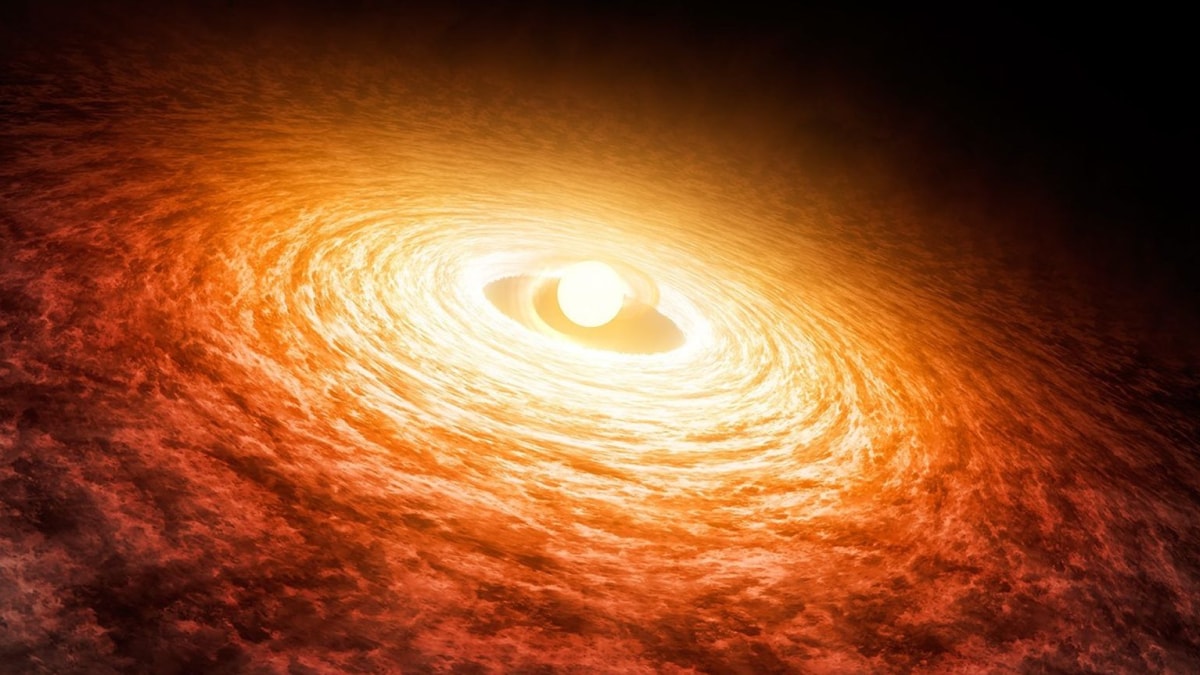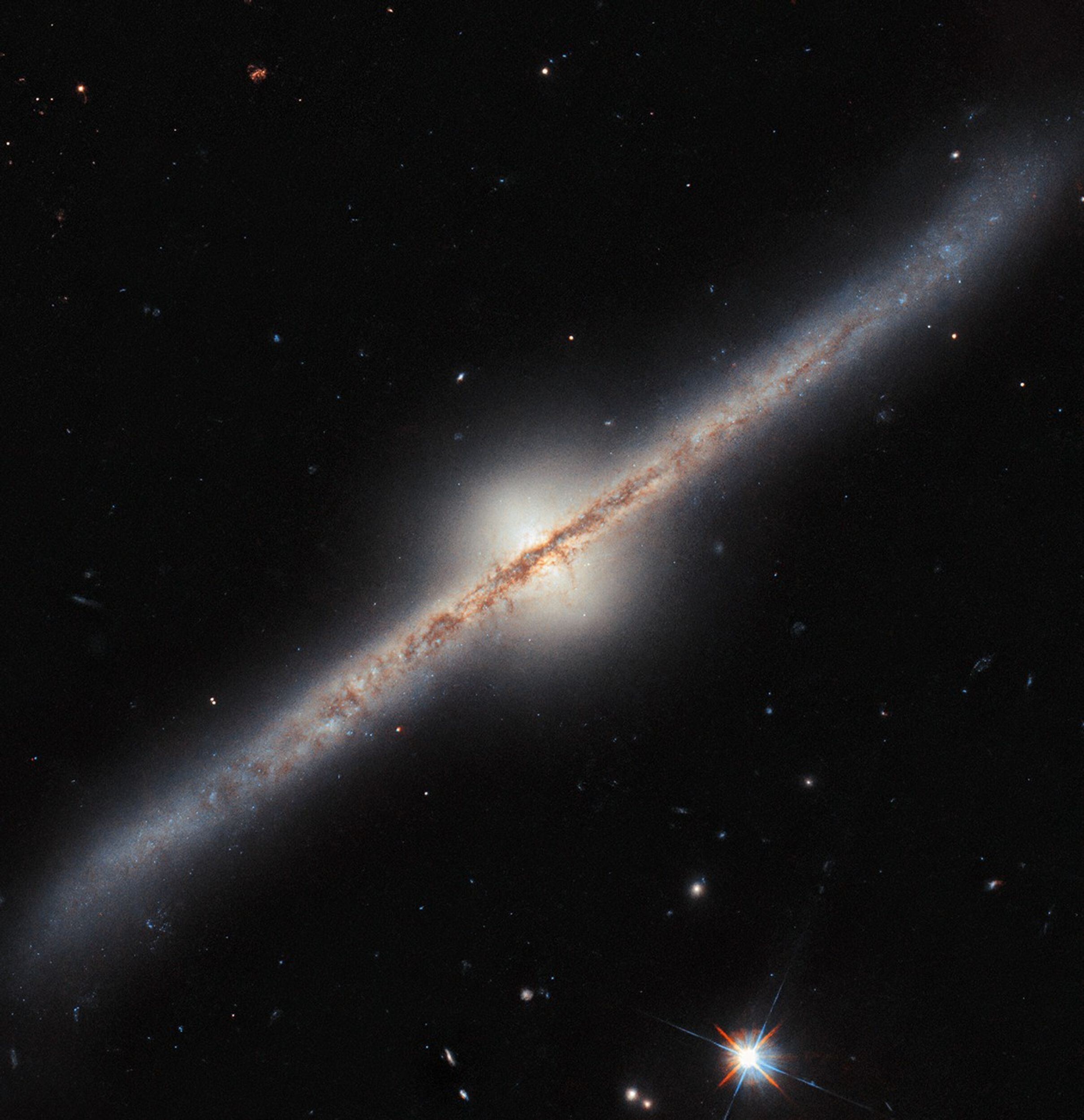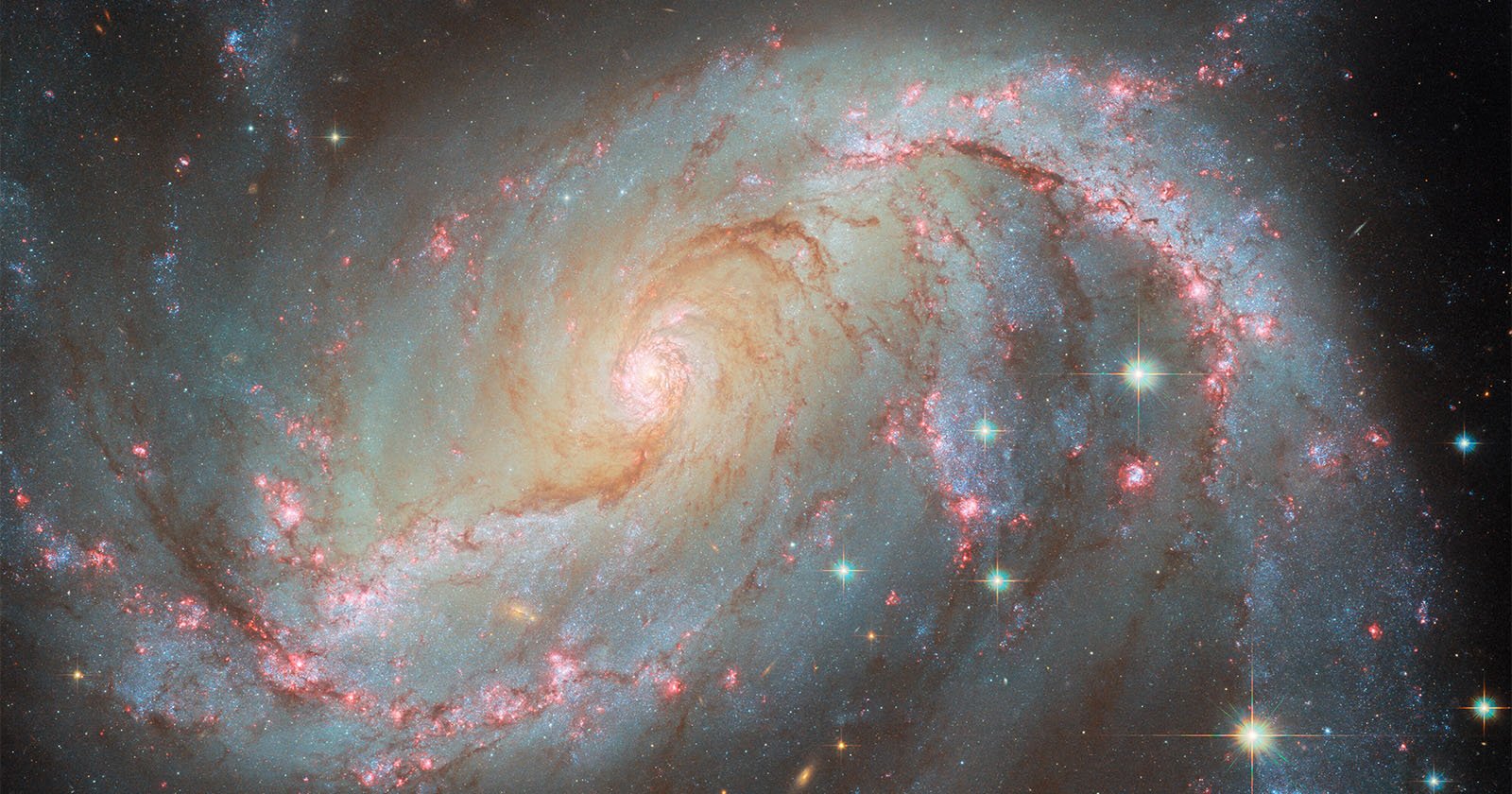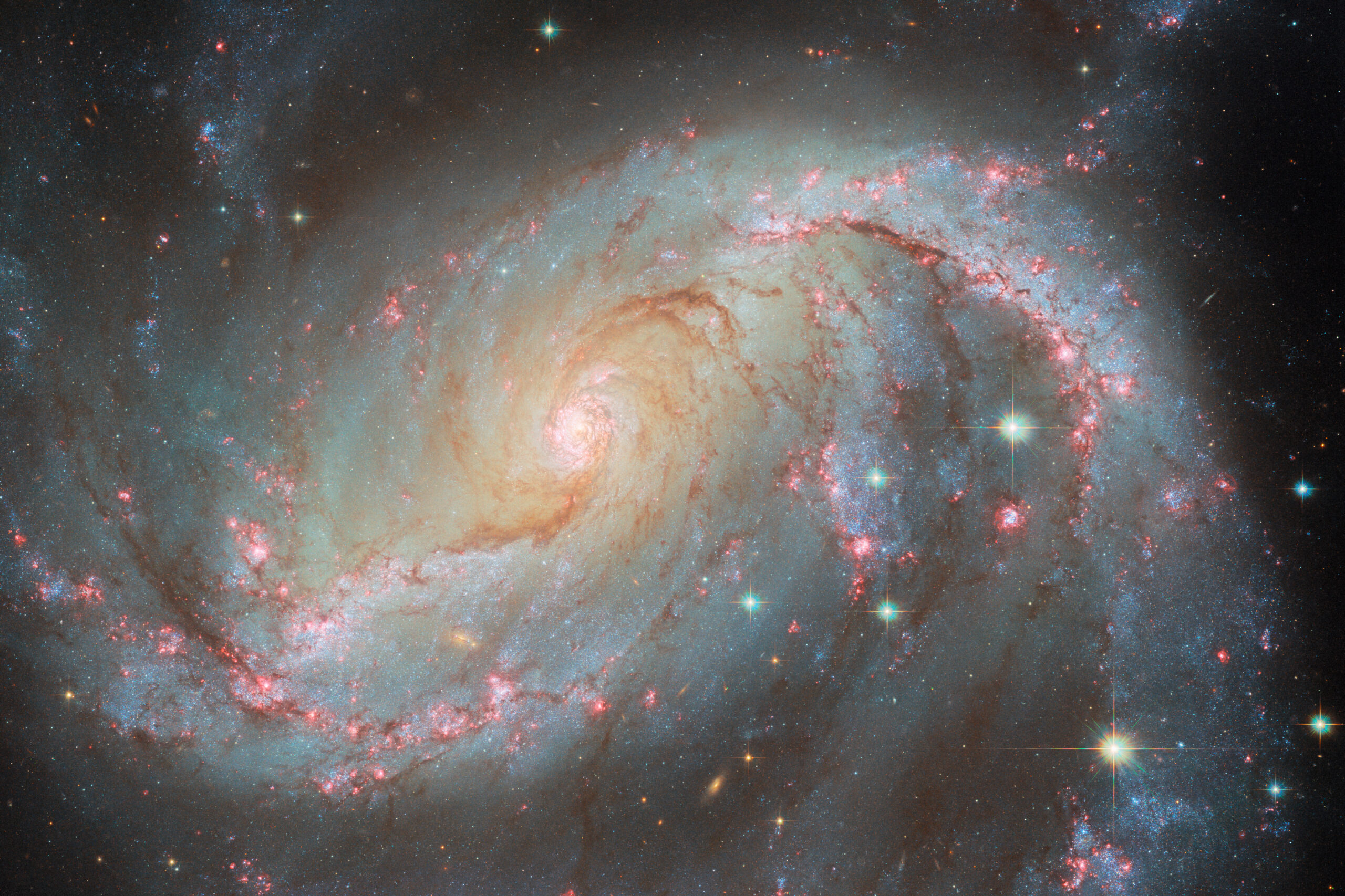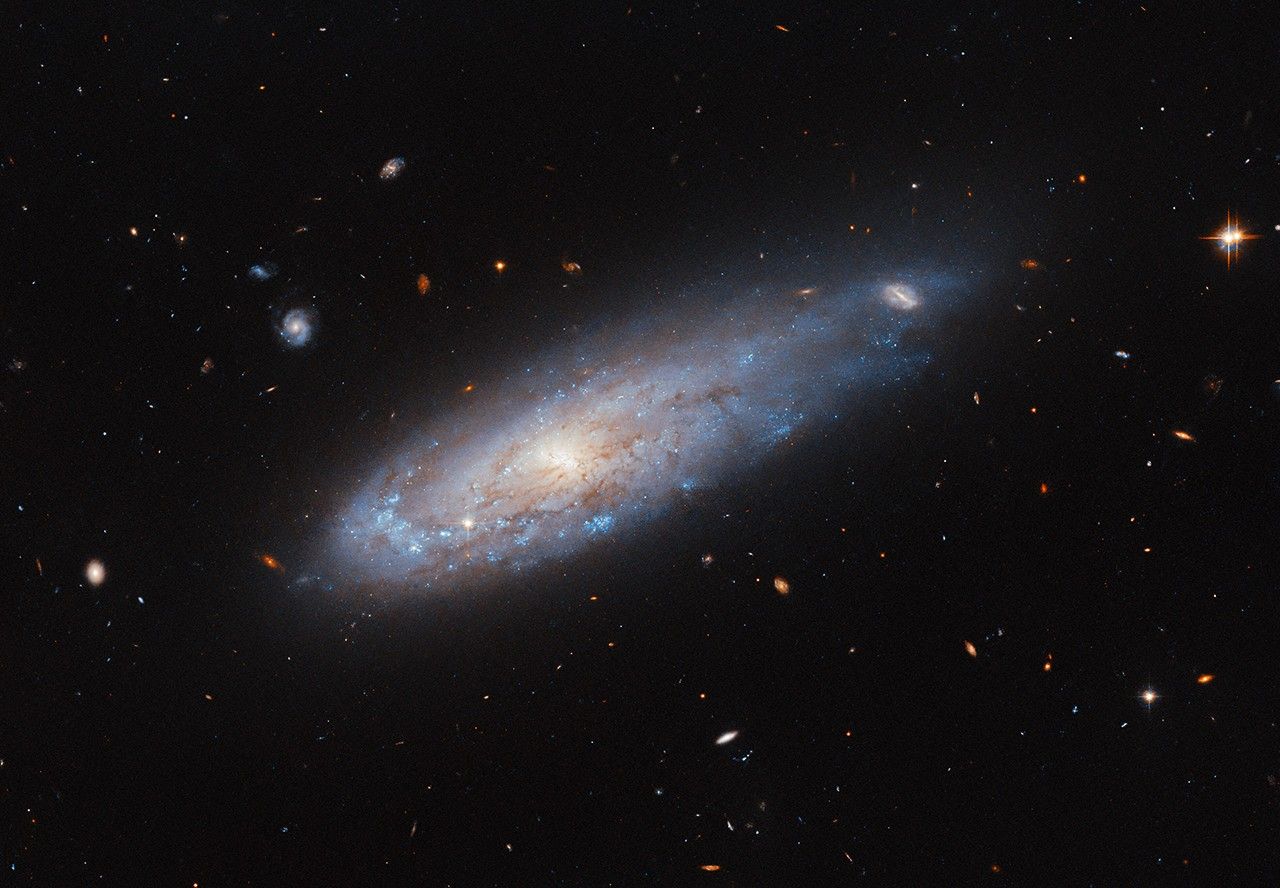NASA’s Hubble Space Telescope has provided new insights into the young star FU Orionis, located in the constellation Orion. Observations have uncovered extreme temperatures in the inner region of its accretion disk, challenging current models of stellar accretion. Using Hubble’s Cosmic Origins Spectrograph and Space Telescope Imaging Spectrograph, astronomers captured far-ultraviolet and near-ultraviolet spectra, revealing […]
This edge-on viewpoint makes the galaxy’s disk appear as a sharp line through space, with its prominent dust lanes forming thick bands of clouds that obscure our view of the galaxy’s glow. If we could fly above the galaxy, viewing it from the top down, we would see this dust scattered across UGC 10043, possibly […]
The cosmos may feel totally inaccessible to the average human, that reminder of an infinite expanse that looks cool to everyone but can only be understood by solitary geniuses. Julia Roman-Duval sees outer space differently. The astronomer at the Space Telescope Science Institute (STScI), the Johns Hopkins– and Hampden-headquartered operations center for NASA’s top telescopes, […]
The Coma Cluster is a particularly rich cluster that contains over a thousand known galaxies. Amateur astronomers can easily spot several of these in a backyard telescope (See Caldwell 35). Most of them are elliptical galaxies, and that’s typical of a dense galaxy cluster like the Coma Cluster: many elliptical galaxies form through close encounters […]
.Technically, this picture is merely a sidekick of the real object of enthusiasm– however room is actually breaking along with activity, and also this industry of vivid celestial objects offers a lot of rate of interest by itself. It may at first seem to be to show just stars, but a closer appearance exposes much […]
NGC 1672, as seen by the Hubble Space Telescope The NASA/ESA Hubble Space Telescope continues to churn out fantastic space images. The latest captured by the 34-year-old telescope shows barred spiral galaxy NGC 1672 in all its luminous glory. NGC 1672 is about 49 million light-years from Earth in the constellation Dorado. Like other spiral […]
This NASA/ESA Hubble Space Telescope image features NGC 1672, a barred spiral galaxy located 49 million light-years from Earth in the constellation Dorado. This galaxy is a multi-talented light show, showing off an impressive array of different celestial lights. Like any spiral galaxy, shining stars fill its disk, giving the galaxy a beautiful glow. Along its two […]
Two of the most advanced telescopes, NASA’s Hubble Space Telescope and the James Webb Space Telescope (JWST), have recently captured a stunning and somewhat eerie view of two merging spiral galaxies, IC 2163 and NGC 2207. The Canis Major constellation is situated around 80 million light-years away. These galaxies are slowly blending into one another. […]
The spiral galaxy in this NASA/ESA Hubble Space Telescope image is IC 3225. It looks remarkably as if it was launched from a cannon, speeding through space like a comet with a tail of gas streaming from its disk behind it. The scenes that galaxies appear in from Earth’s point of view are fascinating; many seem to hang […]
This NASA/ESA Hubble Space Telescope image features the striking spiral galaxy Messier 90 (M90, also NGC 4569), located in the constellation Virgo. In 2019, Hubble released an image of M90 created with Wide Field and Planetary Camera 2 (WFPC2) data taken in 1994, soon after its installation. That WFPC2 image has a distinctive stair-step pattern […]
